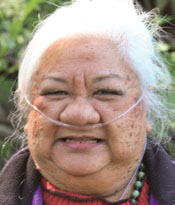Communicating The Lia Fund’s Sunset Plans to Our Grantees
Randy Lia Weil believed in beauty, fairness, the human heart, and the wisdom of nature in all things. She was a dancer, teacher, Feldenkrais practitioner, and artistic spirit. Gracious, graceful, and exceedingly generous, she was the catalyst for many people to create new possibilities for their lives and their dreams.
Prior to her passing in 2006, she created a trust and named a number of friends and colleagues from diverse disciplines with experience in nonprofit organizations to act as advisors to help identify potential grantees. This group created a small private foundation, The Lia Fund, to carry on her values and help realize them in the world.

The Lia Fund made its first set of grants in 2008, and for six years made grants to social change organizations in the areas of climate solutions, community arts, and holistic health and healing that promoted a holistic view of the world, informed by the wisdom of nature. In recognition of the great need for resources to support grassroots organizations, especially in the face of the 2008 recession, the Foundation decided to spend down its total assets, making its last grants in 2014.
The Foundation was thoughtful in its decision to spend down, and used that decision to drive transparency in awarding grants and communicating clearly with grantees. Because of this early decision, the $5 million in grants awarded to 107 organizations were progressive, purposeful, and appropriately communicated to make an impact during the Foundation’s lifespan.
The decision to spend down: the 2008 crash
Although The Lia Fund’s corpus was modest, the board and community advisors did not initially start out with the idea of spending it down in a specified time. Instead, they were absorbed in creating the nuts and bolts of the foundation: deciding on grantmaking priorities, choosing critical issues to fund, and deciphering how 13 individuals could most efficiently participate in our grantmaking process.
In 2008 when the economy crashed, the board and advisors saw grant money grow scarce, especially for the critical needs of grassroots groups. Investment portfolios plummeted, causing some foundations to sit out a couple of grantmaking cycles to meet existing grant obligations. After watching many colleagues radically reduce their grantmaking budgets, the response of The Lia Fund’s board was to do just the opposite—to boost our annual grants threefold! We could do this if we committed to sunset and spend down all of the Foundation’s assets within seven years of our first grants. We would plan to give away $840,000 in grants per year instead of $280,000, and go out of business in a few years! This was a boon for social-justice organizations and small grassroots groups, especially nascent environmental groups and alternative arts programs, which were almost always first on the chopping block because of the recession.
The Lia Fund also had a distinct decision-making advantage over more established foundations in making the decision to sunset: We were newly formed and therefore nimble. We had no permanent, full-time staff; our board was only four people; and our community advisors were volunteers, many with their own nonprofits to run. That reduced incentives to continue the Foundation in perpetuity, and also gave us a unique perspective into rising needs and our ability to address those needs.
Increasing the size of our grants
The board’s decision to increase our grants budget also meant we could raise the average threshold of our grants. We decided to make larger grants, averaging $15,000 to $25,000. This also meant that our grants would encompass close to 25% - 30% of the budgets of small organizations. Responsible philanthropic practice tells us that overreaching 35% of a small nonprofit’s budget makes them vulnerable to failure, especially without an exit strategy. Our field’s widespread practice of making grants to an organization for three years and then moving on is risky business for small grassroots organizations. It leaves many groups to collapse financially when funders exit without notice or support. For us, funding large proportions of budgets was the short-term reality, but it meant we had to be extra vigilant about the challenges that come with this strategy.
Communicating our spend-down schedule—repeatedly
The pleasure of awarding larger grants brought with it the responsibility to communicate with our grantees that the Foundation was sunsetting in the not-too-distant future. We communicated clearly, early, and often with our grantees that we were not a long-term source of funding, and that we were a small private foundation and not an endowed independent one. Our website shared the board’s intention to sunset. Our grant award letters explicitly explained our spend-down plans. We asked extensive questions of grantees about fiscal sustainability and fundraising strategies during our site visits. Each encounter with our grantees was an opportunity to remind them that the Foundation’s doors would close in 2014.
Helping grantees plan for our departure.
Communication isn’t just about what we said, but what we did to practically support grantees. It was in the best interest of our grantees and also of the Foundation to be a resource beyond just our grants to ensure long term sustainability. For very large grants, e.g., $100,000 and above, the Trust added another $5,000 restricted grant upfront to help grantees pursue a sustainability plan early on. Grantees were asked to come up with a concrete plan (beyond looking for a single other foundation) for how our funding was going to be replaced.
For multi-year grants, we focused on grantees’ development and fundraising strategies. We conducted our programmatic due-diligence work at the front-end of the relationship and focused on grantees’ expansion of their funding sources during the second, third, fourth, fifth, up to their final grant. For each grantee report, we asked directly, “What are your plans for replacing our grant at the end of the grant term? Where are you with pursuing other revenue streams?”
By year 4 of our grant relationship, Occidental Arts and Ecology Center, an education center and organic farm in Sonoma County, California, turned around their foundation grants to individual donor ratio from 60/40 to 30/70. By year six, they had raised enough funds for a capital campaign to expand their retreat center that would generate a higher income revenue stream making them less dependent on foundation grants and donations.
What we would have liked to do: final capacity-building grants.
What else could we have done? We would have liked to set aside capacity-building grants during our last year. The board and community advisors initially thought of making our last round of grants restricted to capacity building. But in the interest of continuing with best practices, we concluded our grantmaking with general support grants as we did with all of our past grants. In many ways, we saw general support grants as a form of capacity building that allowed our grantees to apply our grants toward the segment of their organization that was in most need. We trusted that we had done what we could in communicating our sunsetting strategies and grantees knew best where to apply our exit grant.
In summary, a foundation that commits to spending down has to weigh the trade-offs: The short-term expansion of grantmaking must be balanced against the eventual withdrawal of all support to your grantees. A sunsetting foundation not only loses its direct impact on grantees, it also loses its impact on the field when it is gone. That means that the foundation has a responsibility to be transparent about its plans, to announce them well ahead of time, and communicate, communicate, communicate with grantees.
This is the twentieth post in the "Making Change by Spending Down" series, produced in partnership by The Andrea and Charles Bronfman Philanthropies and GrantCraft. Please contribute your comments on each post and discuss the series on twitter using #spenddown. See related content below for more posts in this series.

